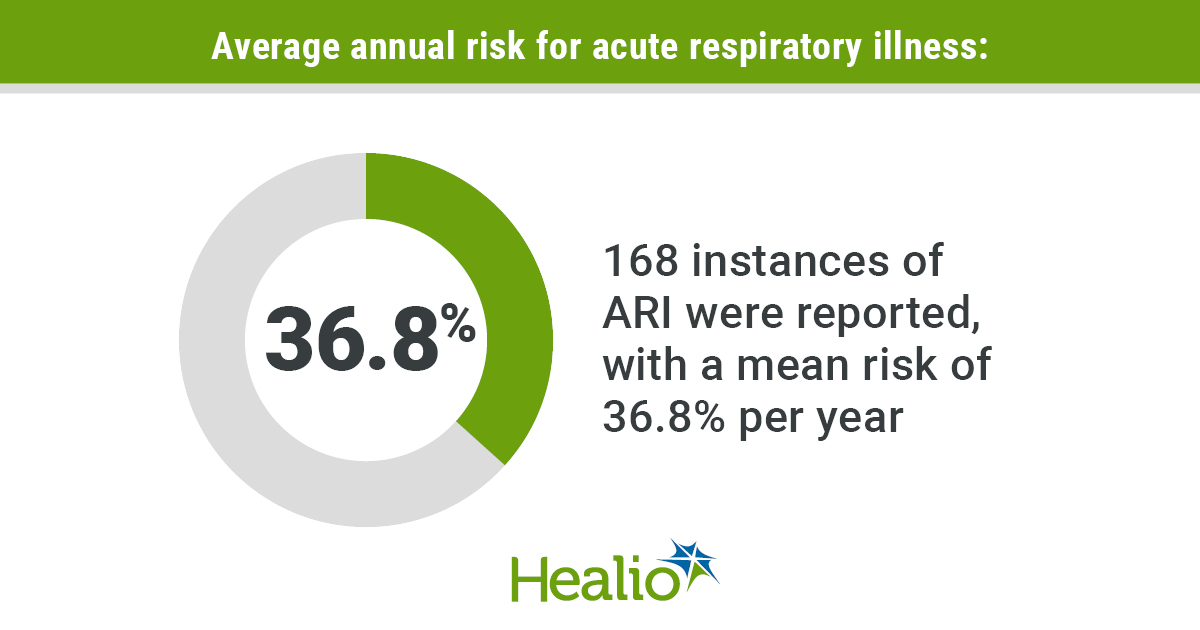Lower indoor humidity increases risk for acute respiratory illness


Lower levels of indoor absolute humidity correlated with an increased risk for acute respiratory illness, or ARI, among community-dwelling older adults in Hong Kong during the cold season, according to a study published in The Journal of Infectious Diseases.
“Clinicians might use our results as evidence to provide some advice on influenza prevention in communities and households,” Lefei Han, PhD candidate at Hong Kong Polytechnic University’s School of Nursing, and Lin Yang, PhD, associate professor at Hong Kong Polytechnic University’s School of Nursing, told Healio in an email. “For example, it may be useful to keep their house warm and humid in cool seasons.”
Han, Yang and colleagues conducted a prospective cohort study of 285 community-dwelling older adults from December 2016 to May 2019. They examined household indoor environmental data and incidence of ARI and performed a time-stratified, case-crossover analysis to determine the additional risk of ARI associated with each per unit increase of daily mean indoor temperature and absolute and relative humidity.
Overall, 168 instances of ARI were reported with a mean risk of 36.8% per year. The researchers noted a negative association of ARI with indoor absolute humidity up to 5 lag days in the cool season, with a 6-day cumulative excess risk of –9% (95% CI, –15.9% to 1.5%). Negative associations with household temperature or relative humidity and ARI were found to be less consistent across cool and warm seasons.

Yang and Han noted that their study was conducted in Hong Kong, a subtropical city, and that it would be interesting to evaluate their study protocol in colder climates.
“Lower indoor and outdoor absolute humidity were strongly correlated with a higher incidence of influenza-like illness in cool seasons, but the association was less clear in warm seasons,” Yang and Han said. “We speculate the wide use of air conditioning in the summer could be the reason. However, our findings might not be applicable to temperate regions, where ambient temperature is much lower than in subtropical regions, and indoor heating devices are widely used.”
Previous studies have examined the link between meteorological factors and the incidence of influenza at the population level, according to Yang and Han. Their research is the first prospective cohort study to look at correlations on the individual level.
“Based on our findings, clinicians could advise their older patients to keep their houses warm and humid to reduce the risk for acute respiratory infection in cool seasons.” – by Eamon Dreisbach
Disclosures: Han and Yang report no relevant financial disclosures.
